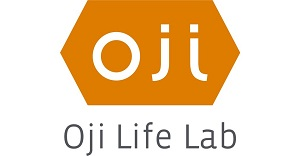ATD Blog
Straight Talk: Building an Emotional Intelligence Program That Works
Fri Jun 10 2022

Emotional intelligence (EI) training is gaining traction in the business community, and that’s a good thing. But as someone who has studied this skill set for many years and done countless presentations to companies around the globe, I can tell you that few organizations are fully tapping into the tremendous potential of EI to improve individual and team performance, decision making, employee engagement, and company success.
Emotional Intelligence Training Yields Quantifiable Results
In my research, I focus on how emotional intelligence can deliver tangible results. We find that supervisors with higher versus lower EI have direct reports who are more inspired and less frustrated, less burnt out, more creative, and more productive. Here are some additional stats from the field that connect effective EI training to bottom-line benefits for your organization:
EI boosts retention. Research from consulting firm Korn Ferry showed that developing emotional intelligence can help leaders keep 70 percent of their employees for at least 5 years.
EI leads to innovation. A Gartner study found managers who display high empathy levels have three times the impact on their employees’ performance as those displaying low empathy.
EI delivers significant ROI. Psychology Today cited a study that found emotional intelligence training can yield a 1,484 percent return on investment for a business.
Why More Organizations Aren’t Benefiting From Emotional Intelligence
Unfortunately, many organizations that have tried implementing EI training—and other types of soft skills training—have been disappointed with the results. It’s no surprise that nearly 90 percent of new skills are lost and forgotten within a year. Building topical awareness through a training program isn’t enough—you must change behavior.
With decades of research into how to build EI skills that translate to tangible benefits, the deficiencies of workplace EI training programs are clear. In my experience, most programs fail because:
They focus on theory instead of building practical habits.
They’re one-way lectures and don’t give learners interactive opportunities to practice these new skills and reinforce their training.
They lack mechanisms to deliver personalized feedback and coaching.
They’re delivered in marathon sessions rather than smaller chunks that would help participants internalize and retain the concepts more effectively.
There’s no plan for long-term sustainability (e.g., continuous development, accountability).
Building an EI Training Program That Works
To give your EI program the best chances of success, you’ll want to avoid the pitfalls above. My advice: Help your learners build practical, research-based skills, and provide lots of opportunities for practice and coaching. Show your teams why these skills are clearly relevant to their work (and that you’re in continuous learning mode). If you can show how their new skills can help them outside of work, they’ll be even more eager to learn. To move beyond tracking completion rates to measuring business outcomes, you’ll need to:
Develop a program that allows your learners to build their EI skills through repeated practice and feedback.
Ensure your program is geared toward authentic, relevant outcomes that matter to your learners.
Foster an approach to training in which your leaders can apply the knowledge they’re gaining to real-world scenarios.
For a practical approach to implementing emotional intelligence learning within your organization, register for our webinar on June 29.

